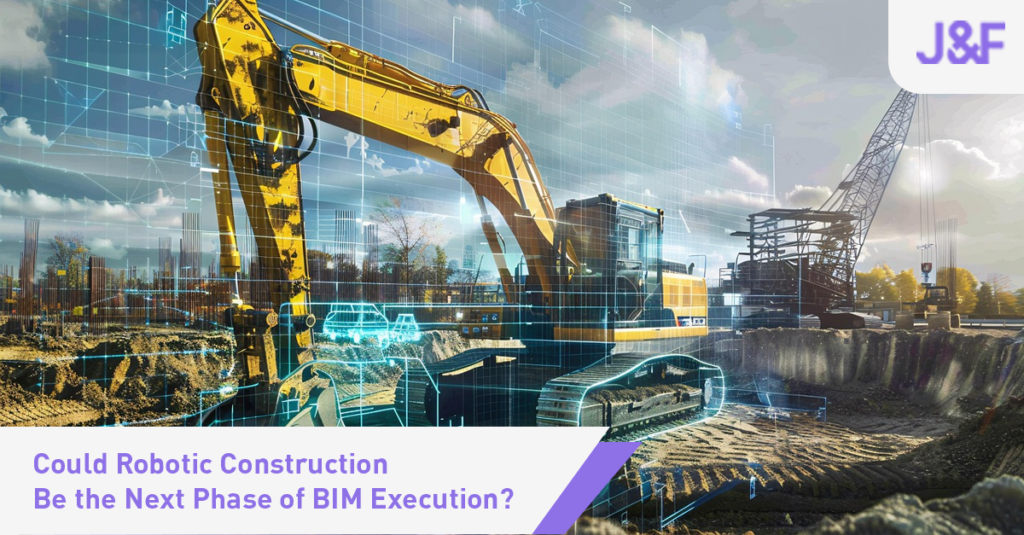Robotic construction has changed the way construction takes place. From planning and design to final delivery, construction robots are playing central roles in boosting project performance.
Unlike conventional construction, which is time-consuming and laborious, robotic construction is expeditious, precision-driven, and highly accurate. It can perform a number of diverse tasks, including bricklaying, 3D printing of structures, welding, excavation, and demolition.
As the construction landscape continues to evolve, experts now seek the integration of robotic construction into BIM technology. But the question remains: how would this pan out, or is this even possible? This article strives to answer these questions.
The Rise of Robotic Construction
With the continual improvement in AI, ML, and sensor technologies, construction robots are increasingly becoming adaptable to varied construction scenarios.
These machines aren’t just good at alleviating repetitive tasks; they can adjust to the working conditions to keep up with a dynamic environment. Additionally, they can sync with human workers and navigate complex job sites, yielding a precision-driven outcome every time.
BIM and Robotics: A Natural Synergy
Building Information Modeling simulates the physical and functional aspects of the project, rendering a realistic 3-D view that helps stakeholders make data-driven decisions regarding design change, workflow optimization, and resource allocation.
BIM can sync with diverse stakeholders, providing them with a unified project view on demand. This significantly reduces conflict and improves project planning, material take-off, budgeting, and facility management.
When used with robotic construction, BIM serves as a database from which robots can fetch information as and when required.
This integration allows robots to operate with unparalleled precision, be it a matter of following a workflow, executing complex drawings, or adhering to underlying standards.
For instance, robotic arms backed by BIM data can perform precision-driven drilling or accurate welding based on the 3D model. This can lead to minimal errors and amplified performance.
Curious about how BIM can revolutionize your design processes? Read our blog on the Role of 3D BIM Modeling in Streamlining Design Processes.
Benefits of Robotic Construction in BIM Workflows
- Enhanced Precision and Quality: Robots performing activities based on the BIM data can yield unmatched results without disrupting time and budget.
- Improved Safety: Robots can take over injury-prone tasks such as welding, working at heights, and operating in extreme weather conditions while staying aligned with the project timeline.
- Faster Project Delivery: Construction robots can perform activities without breaking a sweat for as long as the stakeholders want.
- Cost Efficiency: While the initial investment in robotics can be high, the long-term savings from reduced labor costs, less material wastage, and minimal project delays make it a cost-effective solution.
- Sustainability: Robotic construction can be a way of saving big on resources. The robots can be programmed to avoid the misuse of resources, ensuring minimal waste generation.
Transform Your Project with J&F BIM Solutions
Looking to optimize your design and construction processes? Let J&F show you how our tailored BIM solutions can streamline your operations. Contact us now!
Real-World Applications
Here are some real examples of how robotic construction is contributing to BIM execution:
- Hadrian X by FBR: This ultra-modern robot is hailed for its precision when it comes to bricklaying.
- Contour Crafting: This technology is dedicated to creating ultra-accurate 3D printing of entire structures, all by using robotic arms that fetch data from a BIM model
- Hilti’s Jaibot: A semi-autonomous robot delivers astonishing results when drilling anchors on walls and ceilings.
Challenges to Overcome
Despite a bright future ahead, this integration of BIM and robotic construction has a long way to go. The following challenges might deter this technology from becoming ubiquitous.
- High Initial Costs: Robotic systems, especially in the construction industry, are downright expensive, which can act as a deterrent for budget-conscious projects.
- Skilled Workforce Shortage: Operating and maintaining robotic systems requires specialized training and acumen that traditional workers may not have.
- Technological Compatibility: Adjusting interoperability and compatibility may be a roadblock when training robots to interpret and execute BIM data.
- Safety Concerns: One of the biggest hurdles in leveraging robotic construction is the safety concerns. Though robots can be trained to execute tasks safely, things can go awry if negligence or error seeps in.
The Road Ahead
The integration of robotic construction and BIM is not just an idea on paper; it is already underway as the demand for precision and timely construction soars. It would not be a surprise if this integration becomes widespread in the coming years despite the adaptability and cost hurdles.
The thriving demand for urbanization and prompt construction go hand in hand. The robotic construction can play an integral role in how developers cater to this demand. In the near future, we can expect most construction projects to be equipped with automation powered by BIM and robots. Apart from project planning and resource allocation, construction robots can transform the way groundwork is executed.
Conclusion
Robotic construction adheres to unlimited potential and hence can be used in any facet of construction, be it facility management, fabrication, bricklaying, or design. Adding to this potential is the BIM technology that can transcend the boundaries in terms of automation. The duo of BIM and robotic construction will soon become the need of the hour as the fundamental barriers like labor shortages, inaccurate costing, and safety concerns continue to soar.
